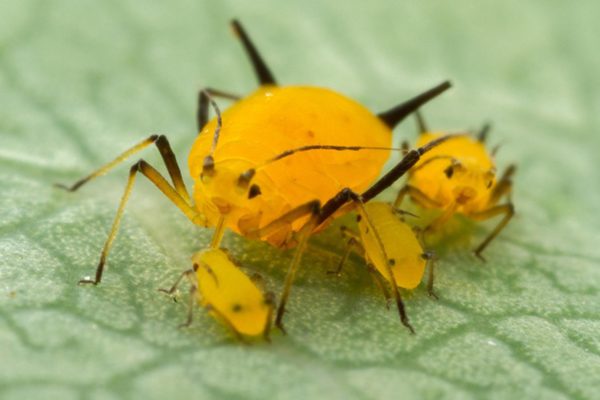AUSTIN, Texas — Scientists from The University of Texas at Austin and Texas A&M University are investigating an innovative new way to protect crops from pathogens, thanks to a four-year cooperative agreement worth up to $5 million awarded through the Defense Advanced Research Projects Agency Insect Allies Program.
The program, which seeks to bolster food security, challenges scientists to develop technologies that support rapid response to environmental disasters (such as severe drought or flooding) or the defeat of a destructive new pathogen or pest before it spreads through fields of grown plants and ruins a crop prior to harvest.
“When you’re facing an imminent threat, you can’t go back in the lab, make some transgenic plants that are resistant, and plant them next year,” said Jeffrey Barrick, an assistant professor in the Department of Molecular Biosciences at UT Austin. “You have to go out in a rapid response, within that same growing season, and save the crop.”
Barrick leads one of four DARPA-funded teams across the country that are attempting to turn traditional crop pests, such as aphids, into delivery vehicles for plant gene therapies.
To farmers, aphids are usually viewed as sap-sucking pests that feed on many of their most valuable crops. But in this project, the scientists plan to genetically modify bacteria living inside the aphids so that when the aphids feed on plants, they act like a syringe to deliver a kind of genetic vaccine that enables the plant to wipe out or resist a specific pathogen. As an important component of this research, they are also developing biocontrol measures, including strategies for ensuring that modified aphids do not reproduce in the wild or release genes into nontarget plants, and that modified plants cannot pass on the new traits to future generations.
“Our team has developed a unique approach to this problem, and we’re excited to test it,” said Barrick, referring to their proposed method — Aphid Endosymbionts for Plant Host Immunization and Defense (AEPHID).
There are four co-principal investigators on the AEPHID team: Barrick; Nancy Moran, a professor in the Department of Integrative Biology at UT Austin; Andy Ellington, a professor in the Department of Molecular Biosciences at UT Austin; and Thomas McKnight, a professor in and head of the Department of Biology at Texas A&M.
All of the research is taking place in laboratories or other contained facilities.
For a final test, the scientists will use a simulated natural environment to examine how the technology might function in a complex setting with representative real-world challenges. To do this, the scientists will put their aphids into a secure greenhouse with 20 species of plants and show that the protective genes are delivered only to the target plants. In this experiment, there will also be other insects in the greenhouse, some of which feed on aphids or on the same plants upon which the aphids feed. To be successful, the scientists will also have to show that these other insects don’t spread the genes to other plants.
The safety and efficacy data they gather will inform future discussions among the public, regulators and policymakers about how such technology might someday be applied.
“We are excited to be pursuing this creative, new approach to solve big challenges in food security and agriculture” Barrick said. “Aphids aren’t normally a welcome sight in a field, but they might be in the future if we can convert them from pests into protectors of vulnerable crops.”




